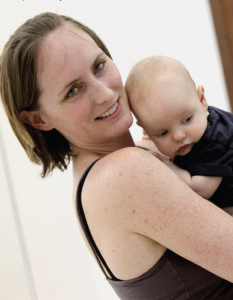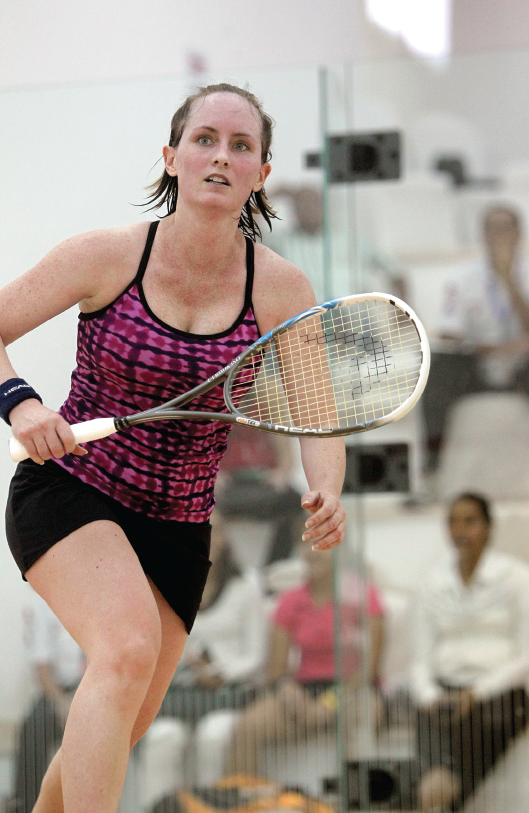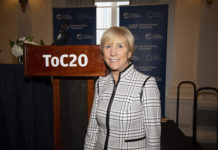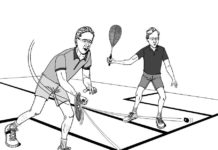By Jen Gabler
Nobody ever said that life as a working mum is easy, and many women agonize over the decision of when, or if, they should go back to work after having their baby.
But imagine if deciding to have a family meant quitting your job right at the peak of your career, knowing that the level you once achieved might have, as a result, become unattainable. That is the very real scenario facing many women who choose to combine having a family with their chosen career in the world of professional sport.
When you think about sportswomen who have successfully trodden this path, there may be one particular high profile example who springs to mind—former World No. 1 Belgian tennis player, Kim Clijsters.

After two years away from the world tennis tour, during which time she married American basketball player Brian Lynch and gave birth to a baby girl, Jada, Clijsters completed a remarkable comeback by winning her second US Open title as a wildcard in September 2009.
Unbelievably this was only her third competitive tournament back since the birth.
However, Clijsters is not the only example of professional sportswomen who have been inspired to further glory after childbirth. British marathon runner Paula Radcliffe won the New York marathon just 11 months after giving birth to her first child in 2007. Now pregnant with her second child, Radcliffe has openly admitted that her sights are still firmly set on winning gold in the 2012 London Olympics.
Even more remarkable than Radcliffe, golfer Catriona Matthew became the first Scottish woman to win a golfing major when she won the British Open, the holy grail of golf, only 10 weeks after giving birth to her second child.
These three athletes are undoubtedly fine examples for any woman who aspires to combine a career with starting a family. However, they are also highly paid, high profile sports stars who can afford the luxury of either around the clock childcare or paying for their families to accompany them on their world travels.
While nobody is claiming that this is the determining factor in their success, it can certainly help when it comes to the pursuit of their sporting ambitions. So how easy can it be for those equally successful sportswomen away from the limelight who choose to juggle their career aspirations with full-time motherhood?
Natalie Grinham is a name few outside the sport of squash would recognize, but as a triple Commonwealth Games gold medallist, four time World Open Finalist and World No. 2, this Aussie-turned-Dutch lady has a record almost as formidable as her more illustrious counterparts.
Having had her first child at the age of 32, Natalie was fully aware of the sacrifices she would have to make.
“Unfortunately, for sportswomen who want to start a family you have to make a choice: either put your career on hold or stop it completely,” she said.
“If you choose to put your career on hold it means that you quit your job for a while, and there is no maternity leave for professional sportswomen. Most working women can also remain in their jobs up to seven or eight months pregnant whereas most professional sportswomen would have to stop paid competition by the third month.
“For me, unfortunately, severe morning sickness meant it was the seventh week.”
For many, the prospect of eight months unpaid leave before a baby is even due to arrive would be worrying enough but, as Natalie admitted, she had always planned on taking a career break, fully supported by her husband. “This wasn’t the first time we had planned on having a family. It was actually in 2006—a week before the Commonwealth Games when we got married.
“Then I won three Gold medals at the Commonwealths and so we discussed it and thought that I might as well keep playing while I was still playing well and enjoying it.” So, having fallen pregnant shortly before making the 2009 World Open final, what are Natalie’s plans for the future now that she is back on the tour?
 “Obviously I’d love to come back to the level I was before I stopped, and I do believe it is possible if everything goes well.”
“Obviously I’d love to come back to the level I was before I stopped, and I do believe it is possible if everything goes well.”
That is something Dr Ellen Hamborg-Petersen, medical advisor to the Women’s International Squash Players Association, also agrees with.
“The better shape you are in before and during your pregnancy, the faster you can get back after,” she said. “A woman’s hormonal level comes back to normal within weeks of giving birth. There can be physiological problems linked to difficulties during the delivery and there is often pelvic pain afterwards due to ligament soreness.
“At the end of the day, from a medical perspective, provided there were no seri- ous complications, a professional sports- woman should be able to return to the same level or better after childbirth.”
In 2011, Tommy Berden (Natalie’s husband and a full-time squash promoter) is organizing the women’s and men’s World Open in Rotterdam and Natalie has stated that she is targeting that major title—one of the few to elude her.
“My goal is to do well there and hopefully get my first World Open title after being runner up four times. It’s not that I’d be that upset if it didn’t happen, because I am happy with the career I’ve had up until now, but I love the game so much and am so competitive, it’s not time for me to let it go just yet.”
At the age of 32, many squash players are contemplating their forthcoming retirement, so how much longer does Natalie see herself competing professionally? “I believe I’m still young enough to play at a high standard,” she said.
“If you look at other female players, Suzanne Horner (former World No. 2) was still top-10 at the age of 40 and Sarah Fitz-Gerald (former World No. 1) retired at 35 while she was still so dominant at the top of the game. So age for me is not a question; I think it’s going to be when I don’t enjoy it anymore that I’ll stop.”
It is not that Natalie is under any illusions about how difficult her comeback is likely to be, but for somebody who continued to build cupboards and drawers for the new baby room right up to her due date, you get the feeling that whatever happens she will take it all in her stride.
In fact, it could be that this down-to-earth successful sportswoman who says that, ‘if you say, no you can’t do that, I’ll prove that actually I can and will,’ may well be an ideal future role model for working mums.





